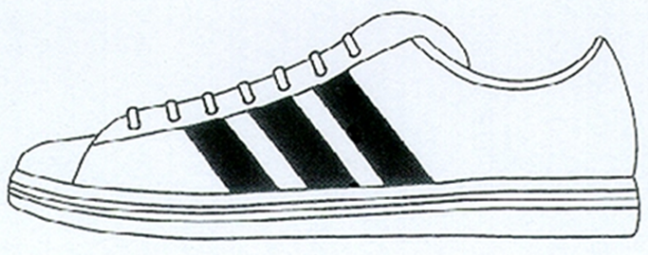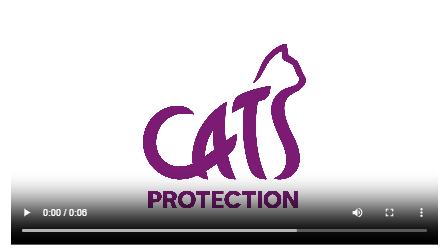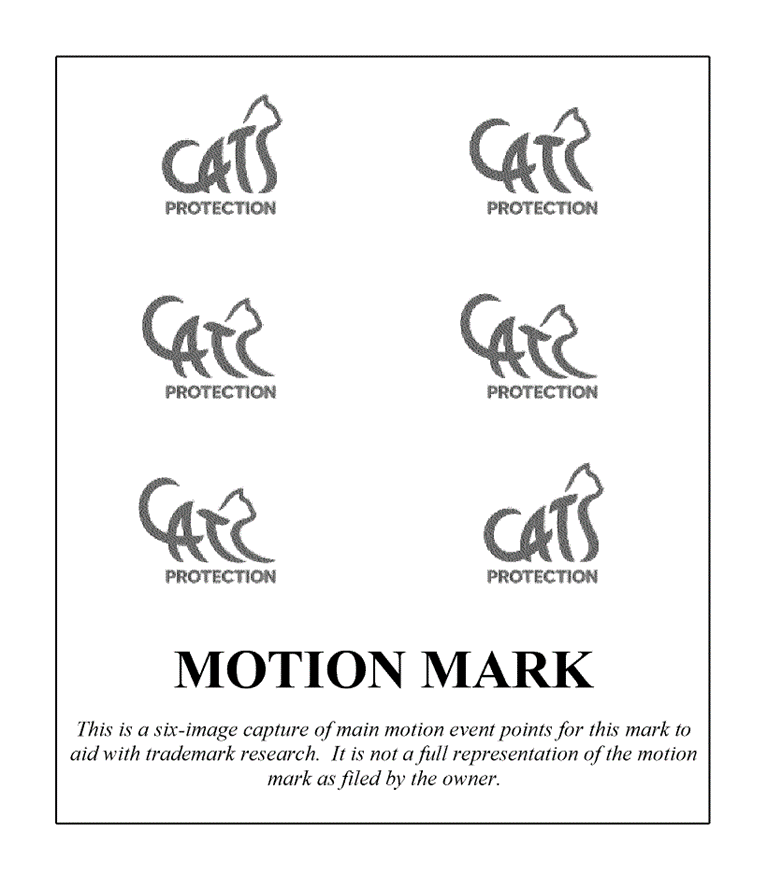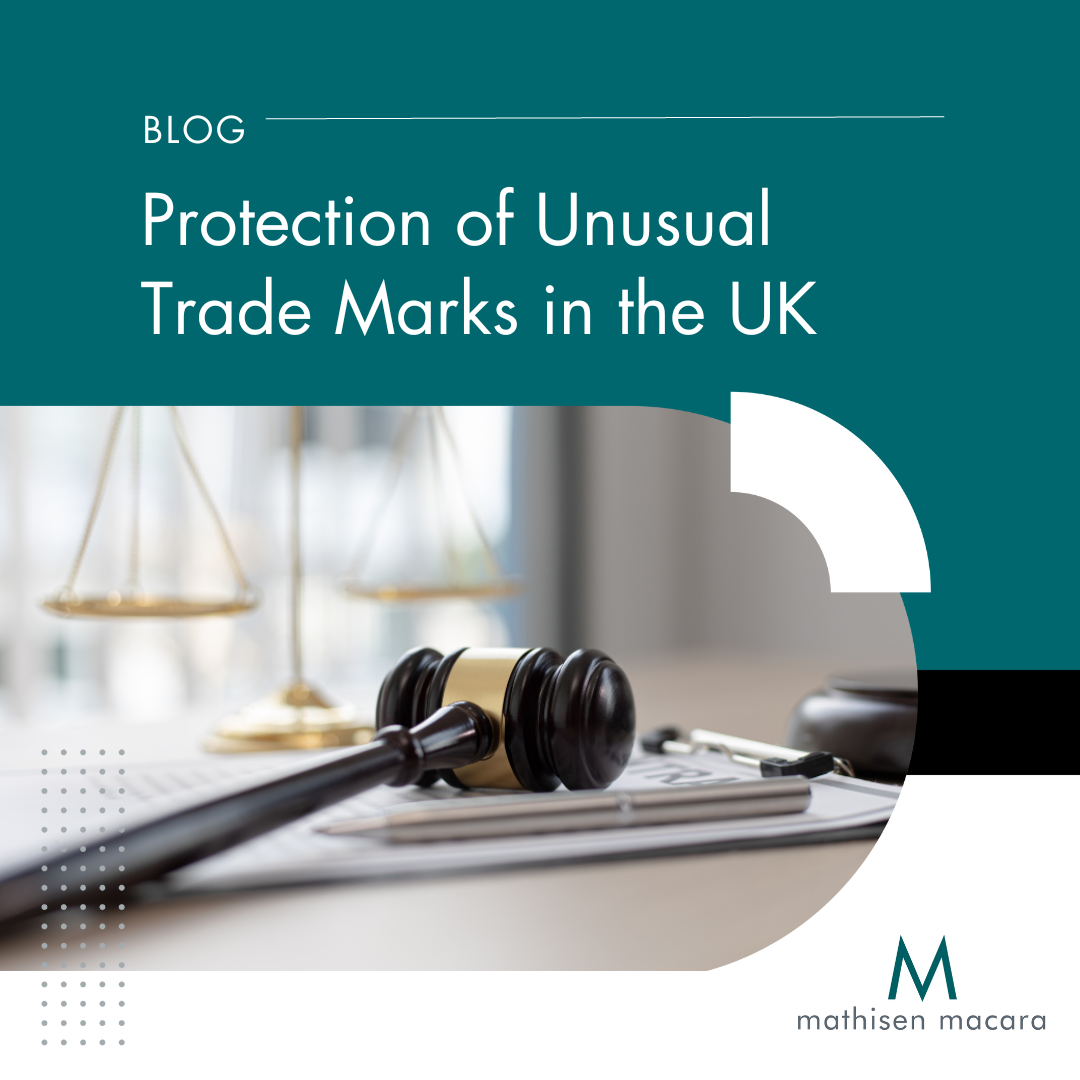Protection of Unusual Trade Marks in the UK
While most trade mark registrations are for conventional word or logo trade marks, UK law has long included a provision for the registration of less conventional marks. Before 14 January 2019, however, the UK Trade Marks Act required a trade mark to be capable of being “represented graphically”. This made it challenging to register many non-conventional marks that were difficult to represent graphically. In 2019, however, Parliament amended the Act such that it now only requires a mark to be represented “in a manner which enables the register and other competent authorities and the public to determine the clear and precise subject matter of the protection.” Consequently, it is now easier to obtain protection for a greater variety of marks, such as sound marks, shape marks, 3D marks, motion marks, holograms, colour marks and position marks.
Although these unconventional forms of marks are registerable, to be registered they must still comply with the Act’s requirements. The marks, therefore, must be capable “of distinguishing goods or services of one undertaking from those of other undertakings,” i.e., it must function as a trade mark and be recognised by the public as a trade mark.
Shape Marks/3D Marks
Two cases that illustrate the obstacles to obtaining a shape mark are Nestlé v Cadbury and London Taxi Corporation v Frazer-Nash. In Nestlé v Cadbury, Nestlé applied to register the shape of its four fingered KitKat as a UK trade mark.

The stumbling block for Nestlé, however, was that it was unable to prove that consumers perceived the shape of the product as an indication of its origin independently from any other trade marks that were present (the shape had always been used in combination with the mark KitKat). In London Taxi Corporation v Frazer-Nash the London Taxi Corporation applied to register the shape of a London Taxi. Again, the application failed. One of the main hurdles is that the public are not used to the shape of a product being used as an indication of origin.
Shape marks can also be rejected under Section 3(2) of the Act, if the mark consists exclusively of:
(a) the shape, or another characteristic, that results from the nature of the goods themselves;
(b) the shape, or another characteristic, of goods that is necessary to obtain a technical result; or
(c) the shape, or another characteristic, that gives substantial value to the goods.
Some shapes marks, however, do get registered. For example, Coco Cola™ has successfully registered numerous 3D marks representing the shape of its bottles, for example UK00910532653. In allowing registration of these marks, the registry has acknowledged that the shape of the bottle is itself a trademark and capable of indicating the origin of the products without the products brand name.

Position Marks
Position marks comprise a specific sign as well as its position on and in proportion to a product. A description, therefore, is also required when filing an application. An example of two allowed position marks are UK00002327094 and UK00002349951 filed by adidas™ for its 3 stripes.
UK00002327094

Description:
The mark consists of three parallel equally spaced stripes applied to footwear, the stripes positioned on the footwear upper in the area between the laces and the sole, as shown in the representation shown on the form of application.
UK00002349951

Description:
The mark consists of three parallel equally spaced stripes applied to the bandage of footwear, the stripes extending from the base of the bandage, as shown in the representation attached to the form of application.
Both marks are listed on the register as 3D marks.
As with the other types of unconventional marks, a position mark must be distinctive. Since consumers do not habitually identify the origin of products based on signs (for example colours or shapes) that are indistinguishable from the appearance of the goods themselves, it is likely that such marks will need to prove acquired distinctiveness before registration.
Colour Marks
Although allowable, colour marks are often difficult to register. Cadbury™ has tried on several occasions to register the colour purple in class 30. Its initial application was rejected by the UK Court of Appeal for being unclear. Cadbury™ then filed several other UK applications, each claiming the same purple colour (Pantone 2685C) but having a different description. Eventually, Cadbury™ was successful and UK00003019362 was registered.
For a colour mark to be successfully registered in the UK, inclusion of a recognised colour reference, such as a Pantone or RAL number, is critical. A colour code alone, however, is unlikely to be sufficient. A clear and precise definition of how the colour will be used is also necessary. Furthermore, it is likely that a relatively precise definition of goods or services will be required.
For Cadbury’s™ UK00003019362 registration the goods are limited to “milk chocolate in bar and tablet form; milk chocolate for eating; drinking chocolate; preparations for making drinking chocolate” and the registration includes the following description: “the colour purple (Pantone 2685C), as shown on the form of application, applied to the whole visible surface of the packaging of the goods.”
Sound Marks
The UK Intellectual Property Office (UKIPO) now allows sound marks to be filed using an electronic file to represent the mark. Since 23 February 2023, sound recordings must be in a single MP3 format file not exceeding 2 MB in size, or in a single JPG or JFIF format file not over 4 MB in size. A sound mark may also be represented graphically by a musical stave divided into bars and showing a clef, musical notes and rests, indicating relative value, and sharps, flats, and naturals (accidentals).
An example of a successfully registered sound mark is the Metro-Goldwyn-Mayer™ roaring lion played at the beginning of each of its films.


The sound mark (UK00905170113) is registered using both a sound file as well as a graphical representation of the sound and a description of the sound.
Motion Marks
Motion marks may also be represented electronically in a single MP4 format file not exceeding 20 MB in size, or in a single JPG or JFIF format file not over 4 MB in size. In addition, motion marks may be represented using a sequence of graphical representations to illustrate the motion.
An example of such a motion mark is UK00003947189 for the mark Cats Protection™. The mark applied for is a motion mark that is represented electronically on the UK registry.

Below are stills of that electronic file.

Hologram Marks
A hologram is an image that changes its appearance when looked at from different angles. Consequently, a hologram mark may be registered in a similar fashion to motion marks, using a sequence of still images to represent the change or may be represented electronically.
Google has registered a hologram mark UK00003375918, choosing to represent the hologram electronically.

Taste, Smell & Texture Marks
Currently, there are no means of representing a taste, smell, or texture “in a manner which enables the register … to determine the clear and precise subject matter of the protection.” Thus, there has not been a successful registration yet!
The UKIPO has published a useful list of allowable file types and file sizes when providing representations for trade mark applications. These came into force on 23 February 2023.
Although the amendment to the Act and the ability to file electronic files has broadened the opportunities for filing unconventional trade marks, most marks filed at the UKIPO are still word or logo marks. The ability to file unconventional marks, has not altered the requirement for the marks to be recognised by the public as an indication of trade origin.
If you would like assistance with filing a conventional or unconventional trade mark, please contact us.
